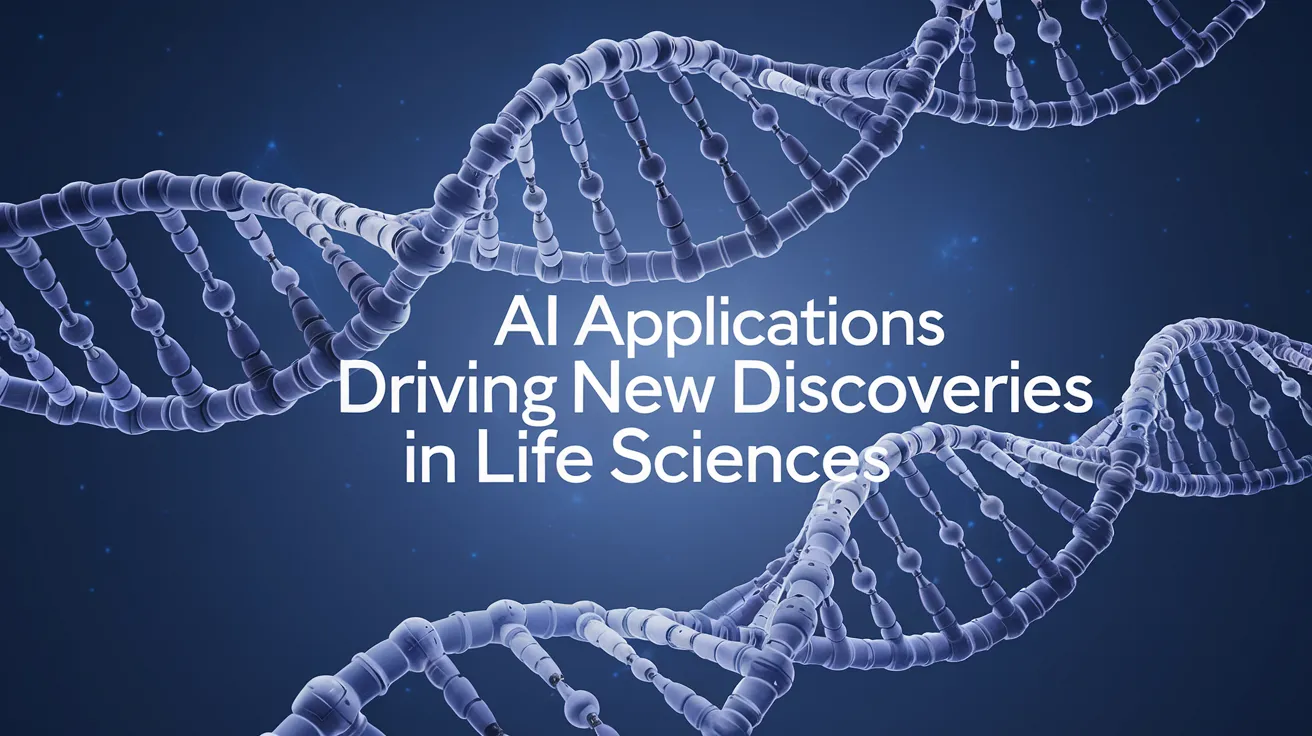AI Applications Driving New Discoveries in Life Sciences

The disruptive potential of artificial intelligence (AI) is just beginning to be realized, particularly in the field of life sciences. The ability to analyze data that once took weeks, months, or even years can now be conducted far more swiftly, resulting in faster and more efficient results. This rapid evolution positions the study of life sciences—covering everything from microorganisms, plants, and animals to entire ecosystems—to benefit from this technological revolution.
For instance, machine learning algorithms capable of analyzing complex biological data are increasingly being employed to generate predictive health models, paving the way for more personalized healthcare solutions. Additionally, AI tools can simulate the potential effects of novel treatments and therapies, allowing researchers to identify promising drug candidates while highlighting potential side effects well before clinical trials commence.
The significance of AI in life sciences was emphasized with the recognition of the 2024 Nobel Prizes in Physics and Chemistry, awarded for AI-related research into protein structure prediction. DeepMind co-founder and Nobel Laureate Demis Hassabis remarked, “If we could build AI in the right way, it could be the ultimate tool to help scientists.”
Beyond healthcare and medicine, the ability to analyze vast amounts of disparate information from various sources can greatly enhance decision-making processes. For example, policymakers tasked with ecosystem protection must navigate multiple complex issues; AI-powered tools can organize and structure this information into a usable format.
Boosting Innovation and Competitiveness
This report outlines a diverse array of AI applications supported by European Union funding, demonstrating how AI technology is driving new discoveries in life sciences. AI innovations in science, particularly within the realm of life sciences, are among the European Commission’s political priorities, as expressed in President Ursula von der Leyen’s mission letter to the Commissioner for Startups, Research, and Innovation.
In her letter, von der Leyen called for the development of a multi-disciplinary strategy for European life sciences that unlocks high-value technologies to facilitate green and digital transitions. She also highlighted the necessity of promoting AI adoption among European researchers. These new strategies are expected to be unveiled in 2025.
The EU-funded projects listed in this report support these ambitions and aim to solidify the EU’s position as a global leader in both scientific research and AI integration, crucial for enhancing European competitiveness and creating sustainable jobs.
Numerous projects emphasize the application of AI tools to deepen our understanding of life sciences, potentially yielding groundbreaking solutions for complex challenges. The knowledge gained will aid policymakers and stakeholders in recognizing the advantages of AI-enhanced methodologies and enacting supportive measures.
Many of these projects carry significant health implications. For instance, AI-PREVENT applies AI to datasets covering health and lifestyle factors, achieving more predictive and personalized healthcare outcomes. Similarly, AI-SPRINT utilizes machine learning to develop risk assessment models for stroke that combine sensory data with lifestyle factors. MIRIADE focuses on transforming dementia care through early diagnoses, while Disc4All leverages AI-driven tools for clinical support in addressing spinal degeneration. EAR aims at creating AI-enabled mobile devices that track health through body sound analysis. Another project, FEMaLe, is centered on clinical decision-support tools powered by AI to facilitate earlier identification of endometriosis, and H-MIPA applies citizen science along with AI techniques to better understand and prevent mosquito-borne diseases, among others.
In terms of environmental challenges, EPOCHAL employs AI to reconstruct historic pollen exposures associated with health impacts. GUARDEN develops AI-driven tools aiding policymakers in integrating biodiversity into their decision-making. Health CASCADE uses digital technologies and AI to enhance scientific training in related fields, while WaterSENSE utilizes integrated data on water management to ensure compliance with regulations. MAELSTROM focuses on preventing plastic waste from entering oceans through AI innovation, and FoodSafeR collects data on emerging food risks using AI to allow for rapid response capabilities.
Additionally, significant initiatives such as BMAI aim to automate repetitive tasks for improved cancer diagnostics, while d3pm has pioneered AI-powered image recognition for detecting prenatal malformations.
In summary, AI tools are set to fundamentally reshape the protocols of life sciences research, paving the way for innovations that actively address some of the most pressing challenges in health and the environment.
This report reinforces that with considerable advancements in AI and ongoing support from governmental and institutional frameworks, the future of life sciences research holds tremendous potential for transformative discoveries.